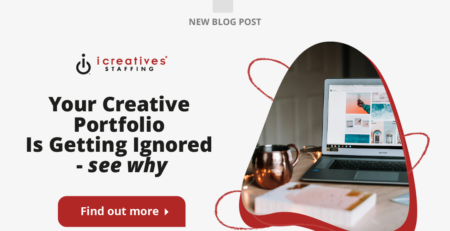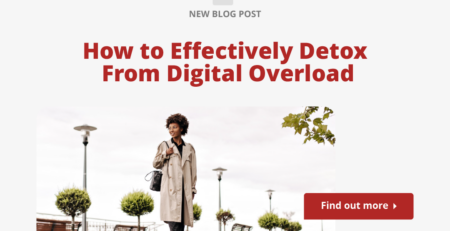Find Your Creative Tribe: Where to Recruit Talented Illustrators
Find Your Creative Tribe: Where to Recruit Talented Illustrators
Building a team of talented illustrators can transform your creative projects, bringing fresh ideas and perspectives that enhance your visual content. Whether you’re a startup looking to establish your brand identity or a large corporation wanting to innovate your advertising strategies, finding the right illustrators is crucial. This guide explores various avenues to connect with skilled illustrators and integrate them into your creative tribe.
The journey to finding talented illustrators begins with understanding the specific needs of your project. Are you looking for traditional artists or digital wizards? Do you need someone who can work with tight deadlines or someone who excels in long-term projects? Answering these questions will help you target your search more effectively.
One of the first places to look is online platforms dedicated to freelancers and creative professionals. Websites like Behance, Dribbble, and ArtStation are teeming with talented artists showcasing their portfolios. These platforms allow you to browse through countless profiles and find illustrators whose style and expertise match your project requirements.
Another effective strategy is to tap into social media networks. Platforms like Instagram and Pinterest are not just for socializing; they’re also powerful tools for discovering and connecting with artists. Many illustrators use these platforms to display their work, making it easy to approach them directly for collaboration.
Networking events and art fairs are also invaluable for meeting illustrators in person. These events provide a chance to see their work in real-time and start conversations that could lead to future collaborations. Additionally, workshops and conferences dedicated to design and illustration can be fertile ground for recruiting new talent.
For those who prefer a more structured approach, creative staffing agencies specializing in creative roles can be a great resource. These agencies, such as icreatives, understand the nuances of hiring for creative positions and can help streamline the recruitment process. They ensure that candidates not only have the artistic skills you need but also fit well with your company’s culture and values.
Internship programs offer another avenue for discovering up-and-coming illustrators. By partnering with art schools and universities, you can tap into a pool of fresh talent eager to prove their skills in the real world. Internships also allow you to evaluate an illustrator’s work ethic and compatibility with your team before making a long-term commitment.
Referrals from other artists and designers can also lead you to exceptional illustrators. Since creative professionals often network with each other, they can recommend colleagues whose style and professionalism have impressed them. This method can sometimes yield quicker and more reliable results than a broad external search.
Once you’ve identified potential candidates, it’s important to assess their portfolios and previous work. Look for diversity in style and medium, as well as consistency in quality. A robust portfolio that aligns with your project’s aesthetic and goals is a strong indicator of a successful future collaboration.
After narrowing down your choices, conducting interviews is essential. This step not only helps gauge an illustrator’s communication and problem-solving skills but also their passion for your project. It’s important that they share your vision and are excited about contributing to it.
Finally, fostering a supportive environment that encourages creativity and collaboration is crucial for keeping talented illustrators in your team. Regular feedback, fair compensation, and opportunities for professional growth can help maintain high levels of motivation and loyalty among your creative staff.
Most Asked Questions About Recruiting Talented Illustrators
- What are the best online platforms to find talented illustrators?
- How can social media be used effectively to recruit illustrators?
- What should I look for in an illustrator’s portfolio when recruiting?
- How do I conduct effective interviews with potential illustrator hires?
- What are the benefits of using a staffing agency for hiring illustrators?
- How can I create a compelling job offer for an illustrator?
- What strategies can help retain top illustration talent in my team?
What are the best online platforms to find talented illustrators?
Finding the right illustrator for your project can be a daunting task, but several online platforms make this process easier by hosting communities of talented artists. Platforms like Behance, Dribbble, and ArtStation are popular among illustrators for showcasing their work. These sites provide extensive search functionalities that allow you to filter artists by style, experience, and other relevant criteria.
Behance, part of the Adobe family, is renowned for its diverse creative community. It allows illustrators to post detailed case studies of their projects, giving potential clients a deep insight into their creative process and final outcomes. Dribbble is favored for its highly visual portfolios and is particularly good for finding illustrators who specialize in digital art. ArtStation, while similar, is heavily frequented by artists involved in the gaming and entertainment industry, making it ideal for projects in those realms.
LinkedIn also serves as a powerful tool for recruiting professionals, including illustrators. Its platform allows not only for the viewing of portfolios but also provides insights into the professional experiences and networks of potential hires. This can be particularly useful for gauging an illustrator’s professional demeanor and industry connections.
For those looking for freelance illustrators, platforms like Upwork and Freelancer can be useful. These sites allow you to post your project requirements and receive bids from artists. This can be a cost-effective way to find talent, especially for short-term projects or specific one-off tasks.
When using these platforms, it’s important to take the time to review each illustrator’s portfolio thoroughly. Look for signs of professionalism such as the quality of the images, the attention to detail in the descriptions, and the overall presentation. These elements can indicate an illustrator’s dedication to their craft and professionalism in their work approach.
It’s also advisable to read reviews or testimonials from previous clients if available. This feedback can provide valuable insights into an illustrator’s reliability, turnaround time, and ability to communicate effectively with clients.
Engaging with illustrators through these platforms often allows for initial discussions that can help clarify whether they might be the right fit for your project. Many platforms offer tools for messaging and conducting preliminary interviews, which can streamline the recruitment process.
Additionally, some platforms offer contractual protections and payment systems that ensure both parties fulfill their obligations, providing a layer of security for your transactions. This can be particularly important when working with freelancers whom you might not meet in person.
In conclusion, while there are many online platforms to find illustrators, choosing the right one depends on your specific needs and the nature of your project. Platforms like Behance, Dribbble, and ArtStation are excellent for discovering high-quality illustrators with robust portfolios, while LinkedIn can help gauge an illustrator’s professional background and network.

How can social media be used effectively to recruit illustrators?
Social media platforms offer a dynamic and interactive environment for recruiting talented illustrators. Platforms like Instagram, Pinterest, and even Twitter have become essential tools in the recruiter’s toolkit, providing access to a vast pool of creative talent. Here’s how you can use these platforms effectively to attract and recruit illustrators.
Instagram is arguably the most visual of all social media platforms, making it ideal for illustrators to showcase their work. Recruiters can use Instagram to discover new artists by exploring hashtags related to illustration styles, project types, or even specific events and themes. Engaging with posts, following potential candidates, and direct messaging are straightforward ways to initiate contact with illustrators whose work aligns with your project needs.
Pinterest is another valuable resource for finding inspiration and talent. By creating boards specific to different illustration styles or project needs, recruiters can not only save relevant artist work but also attract illustrators to their own profiles. Pinterest’s algorithm can also help in discovering new artists through its recommendation system, which suggests pins based on the content you’ve interacted with.
Twitter, while less visual, can be useful for tapping into professional networks and following real-time conversations about design and illustration. Using Twitter Lists to follow and interact with groups of illustrators, or participating in industry-specific chats, can help recruiters stay informed about emerging trends and talent in the field.
When using social media for recruitment, it’s important to maintain a professional yet approachable presence. Regularly updating your own profiles with information about your projects, team culture, and what you look for in collaborators can attract illustrators who are a good fit for your organization.
Engaging with content by liking, commenting, and sharing can also help build relationships with potential candidates before the actual recruiting process begins. This approach not only increases your visibility among illustrators but also helps establish your reputation as a desirable collaborator or employer.
Another effective strategy is to feature successful collaborations or testimonials from other illustrators who have worked with your team. This not only showcases the quality of work your team produces but also builds trust and credibility among potential recruits.
For a more targeted approach, paid advertising on these platforms can increase the reach of your recruitment efforts. Ads can be customized to appear in the feeds of users who meet specific criteria, such as those who follow certain illustration-related accounts or have interests aligned with your project requirements.
Finally, it’s crucial to ensure that the process from initial contact to formal recruitment is smooth and professional. Providing clear information about how to apply, what the next steps are, and maintaining timely communication can help keep potential candidates engaged and interested in your offer.
In summary, social media platforms provide a rich and accessible pool of talented illustrators. By using these platforms strategically, you can effectively showcase your projects, engage with potential candidates, and build relationships that facilitate successful recruitment.
What should I look for in an illustrator’s portfolio when recruiting?
When recruiting an illustrator, their portfolio is your window into their professional capabilities and artistic style. It’s essential to assess a portfolio carefully to ensure that the illustrator’s skills align with your project’s needs. Here are key elements to consider when reviewing an illustrator’s portfolio.
Firstly, look for diversity in the portfolio. A versatile illustrator will showcase a range of styles, mediums, and subject matters. This diversity indicates adaptability and the ability to tailor their style to fit different project requirements. However, if your project needs a very specific style, then a specialized portfolio might be more appropriate.
Quality of work is paramount. Pay attention to the details in the illustrations such as the use of color, composition, and line work. High-quality visuals will not only appeal more to your target audience but also reflect the illustrator’s professionalism and attention to detail.
Consistency across the portfolio is another important factor. It shows professionalism and reliability in maintaining a certain standard of work. Inconsistencies in quality might indicate potential reliability issues or a lack of experience.
Originality and creativity are crucial for setting your project apart from the competition. Look for unique concepts or unusual combinations of styles and mediums that suggest the illustrator can bring a fresh perspective to your project.
Relevance to your project is perhaps the most critical aspect. The portfolio should contain work that resonates with the style and feel of your project. If you’re working on a children’s book, for example, look for illustrators who have experience with children’s book illustrations or who demonstrate the ability to evoke a sense of whimsy and wonder appropriate for young audiences.
Client testimonials or case studies included in the portfolio can provide insights into the illustrator’s work ethic and ability to meet client expectations. Positive feedback from previous clients can be a strong indicator of professionalism and the ability to deliver quality work on time.
The illustrator’s personal statement or biography can also be telling. It can give you a sense of their passion for illustration and whether they have a personal connection to the types of projects you are offering. This can be important for long-term collaborations.
Technical skills should also be assessed, especially if the project requires specific software or techniques. Ensure that the illustrator has experience with the tools necessary to complete your project efficiently.
Finally, the presentation of the portfolio itself matters. A well-organized and professionally presented portfolio suggests that the illustrator takes their work seriously and values how they are perceived by potential clients or employers.
In conclusion, a well-rounded evaluation of an illustrator’s portfolio should give you confidence in their ability to meet the demands of your project. Look for diversity, quality, consistency, originality, and relevance, among other factors, to ensure you choose the right illustrator for your team.

How do I conduct effective interviews with potential illustrator hires?
Conducting effective interviews with potential illustrator hires is crucial in determining whether they are the right fit for your project and team. An interview should not only assess an illustrator’s skills and experience but also their ability to communicate, collaborate, and adapt to new challenges. Here are some strategies to help you conduct successful interviews.
Start by preparing thoroughly for the interview. Review the illustrator’s portfolio in detail and note any specific works that you want to discuss. Prepare questions that relate to those works, as well as broader questions about their experience and creative process. This preparation shows respect for their work and provides a solid foundation for the interview.
Ask open-ended questions that encourage detailed responses. Instead of asking yes or no questions, prompt the illustrator to describe their creative process, how they overcome challenges, or how they have worked collaboratively in the past. This will give you better insights into their approach to work and problem-solving skills.
Discuss specific projects they have worked on, especially those that are similar to what your project will entail. Ask about their role in these projects, the challenges they faced, and how they addressed them. This can help you gauge their experience level and their ability to handle the types of challenges your project might present.
Include scenario-based questions to assess their problem-solving and creative thinking skills. For example, present a hypothetical project brief and ask how they would approach it. This not only reveals their thought process but also their ability to quickly adapt to new projects.
Communication is key in collaborative environments, so evaluate their communication skills. How clearly do they explain their ideas? Do they listen well and respond thoughtfully to questions? Effective communication will be crucial in ensuring that project visions are shared and executed accurately.
Assess their technical skills and familiarity with necessary tools and software. Depending on the nature of your project, certain technical skills may be essential. Make sure they are proficient in the tools they will need to use.
Discuss their availability and willingness to meet project deadlines. Illustrators often juggle multiple projects, so it’s important to understand their capacity and ensure that they can deliver work on time.
Explore their passion for your project. An illustrator who is genuinely interested in your project is more likely to contribute creatively and enthusiastically. Ask why they are interested in your project and what they can bring to it.
Consider their cultural fit within your team. An illustrator’s ability to mesh well with your team’s culture can significantly impact the success of your collaboration. Discuss their previous experiences working in teams and what they look for in a collaborative environment.
Finally, provide a clear overview of what working with your team would entail. Discuss expectations, project goals, timelines, and any other pertinent details. This transparency helps potential hires make informed decisions about whether the opportunity is right for them.
What are the benefits of using a staffing agency for hiring illustrators?
Using a staffing agency to hire illustrators can offer several advantages, especially for companies that do not have a dedicated HR team or those unfamiliar with the creative industry. Staffing agencies specializing in creative roles can simplify the recruitment process and provide access to a broader talent pool. Here are some benefits of using a staffing agency for hiring illustrators.
Access to a wider talent pool is one of the primary benefits of using a staffing agency. Agencies have
networks of pre-vetted professionals ready to fill roles, including niche skills or specialized artistic styles that might be difficult to find through traditional recruitment channels.
Staffing agencies handle the initial steps of the hiring process, including advertising vacancies, screening resumes, and conducting preliminary interviews. This can save you a significant amount of time and resources, allowing you to focus on your core business activities.
They also provide expertise in the creative industry. Recruiters at these agencies often have a background in art and design, giving them a better understanding of the skills and qualities needed in an illustrator. This expertise helps in accurately matching candidates with job requirements.
Flexibility is another advantage. Staffing agencies can help you find freelance, part-time, or full-time illustrators, depending on your project needs. This flexibility is particularly useful for companies that need additional resources for specific projects without committing to a permanent hire.
Risk reduction is a significant benefit. Most staffing agencies offer guarantee periods where you can evaluate the illustrator’s performance. If they do not meet your expectations, the agency will typically provide a replacement without additional charges.
Staffing agencies also handle administrative details such as contracts, payroll, and other HR responsibilities when you hire freelancers or temporary workers through them. This can be particularly helpful for small businesses or startups without a dedicated HR department.
They can provide valuable market insights and salary benchmarking information, which can help you make informed decisions about compensation packages and other benefits. This ensures that your offers are competitive and attractive to top talent.
Using a staffing agency can also help you maintain confidentiality during the hiring process, especially if you are looking to replace a current team member without causing disruption.
Moreover, staffing agencies often provide ongoing support and advice even after a hire is made, helping with onboarding processes and ensuring a smooth transition for both the illustrator and your team.
In conclusion, while there are costs associated with using a staffing agency, the benefits of convenience, access to skilled talent, and professional support can outweigh these expenses, making it a worthwhile consideration for many businesses.
How can I create a compelling job offer for an illustrator?
Crafting a compelling job offer for an illustrator involves more than just a competitive salary. It requires a deep understanding of what motivates creative professionals and what they value in a work environment. Here are some tips to help you create an offer that is attractive to top illustrators.
- Competitive Compensation: Start with a competitive salary that matches the skill level and experience of the illustrator. Research industry standards for similar roles and consider factors like location, demand for the skill set, and the illustrator’s portfolio quality. You can find useful salary information in resources like How to Know if Your Salary is Competitive.
- Creative Freedom: Illustrators thrive in environments where they can express their creativity. Offer opportunities for them to lead projects or have a say in the creative direction. This not only makes the role more appealing but also helps in producing original and high-quality work.
- Professional Development: Include opportunities for growth and learning. Whether it’s budget for courses, workshops, or access to conferences, supporting an illustrator’s professional development shows that you value their career progression and are invested in their future.
- Work-Life Balance: Flexible working hours, the option to work remotely, or having a balance between client-driven projects and personal creative work can make your offer stand out. These aspects are increasingly important to creative professionals and can be a deciding factor in accepting a job offer.
- Project Diversity: Illustrators often seek variety in their work to keep their creative juices flowing. Offer a range of projects that challenge their skills and allow them to work with different mediums or industries.
- Benefits and Perks: Beyond salary, other benefits like health insurance, retirement plans, and paid time off are important. Unique perks such as allowances for art supplies, memberships for creative platforms, or even sponsorships for personal art exhibitions can also be very attractive.
- Collaborative Culture: Emphasize the collaborative nature of your team and how each member’s input is valued. Illustrators should feel they are part of a community of professionals who inspire and support each other.
- Recognition and Rewards: Outline how you recognize and reward outstanding work. This could be through formal awards, public acknowledgments, or even profit-sharing schemes for commercially successful projects.
- Contract Clarity: Be clear about job expectations, project timelines, and feedback processes. A well-defined contract helps prevent misunderstandings and illustrates your professionalism.
- Vision and Stability: Share your company’s vision, the role of the creative team in achieving it, and the stability and future growth prospects of your business. This helps the illustrator see the long-term value in joining your team.
By addressing these elements, you can create a job offer that not only meets the financial needs of the illustrator but also aligns with their professional and personal aspirations, making it a compelling choice for top talent.
What strategies can help retain top illustration talent in my team?
Retaining top illustration talent is crucial for maintaining the quality and consistency of your creative outputs. Here are several strategies that can help keep your illustrators motivated and committed to your team:
- Continuous Engagement: Regular check-ins and feedback sessions help illustrators feel valued and integrated into the team. This also provides opportunities to address any concerns and encourage their input on projects.
- Career Path Planning: Work with illustrators to develop clear career paths within your organization. This could involve promotion opportunities, role expansions, or lateral moves to areas they are interested in exploring.
- Creative Challenges: Keep the work interesting by offering new and challenging projects that push their skills and creativity. This prevents job monotony and keeps your team engaged.
- Recognition Programs: Implement recognition programs that acknowledge both creative achievements and contributions to team goals. Recognition can be as simple as ‘Illustrator of the Month’ awards or feature articles on company platforms.
- Competitive Compensation: Regularly review compensation packages to ensure they remain competitive within the industry. This includes salary, bonuses, and benefits. For more insight, refer to How to Conduct a Performance Review.
- Work Environment: Foster a supportive and inspiring work environment. This includes everything from the physical workspace to the cultural atmosphere. Encourage a culture of openness, where ideas can be freely shared and creativity is nurtured.
- Professional Development: Continue to invest in their professional growth. Offer access to training programs, workshops, and seminars that can enhance their skills and knowledge.
- Autonomy: Allow illustrators some autonomy in how they complete their projects. Trusting them to make decisions can boost their confidence and satisfaction with their work.
- Team Building: Regular team-building activities can strengthen relationships among team members and improve collaboration. This is especially important in creative teams where synergy can significantly enhance project outcomes.
- Long-term Incentives: Consider long-term incentives such as stock options or retention bonuses for staying with the company for a predefined period. This not only rewards loyalty but also aligns their goals with the company’s success.
Implementing these strategies can help you create a work environment that is conducive to creativity and innovation, thereby retaining your top illustrative talent and ensuring the long-term success of your creative projects.
Conclusion
In conclusion, recruiting and retaining talented illustrators requires a multifaceted approach that goes beyond mere talent scouting. It involves creating compelling job offers, fostering a supportive work environment, and continuously engaging with your team to ensure their creative and professional needs are met. By strategically leveraging online platforms, social media, and staffing agencies, and by focusing on comprehensive development and retention strategies, you can build a resilient and innovative creative team that drives your projects to success. Remember, the key to finding and keeping top illustrators lies in understanding their needs and providing an environment that encourages their best work.
In today’s competitive market, finding the right creative and marketing expert can be a challenge. But with icreatives, you’re in experienced hands. With 37 years in staffing and a track record of matching more than 10,000 employees to over 1,000 companies worldwide, we know how to connect you with the best. Plus, you only pay if you hire—there’s no risk, only results.
Ready to find your perfect creative or marketing expert? HIRE WITH ICREATIVES today!












